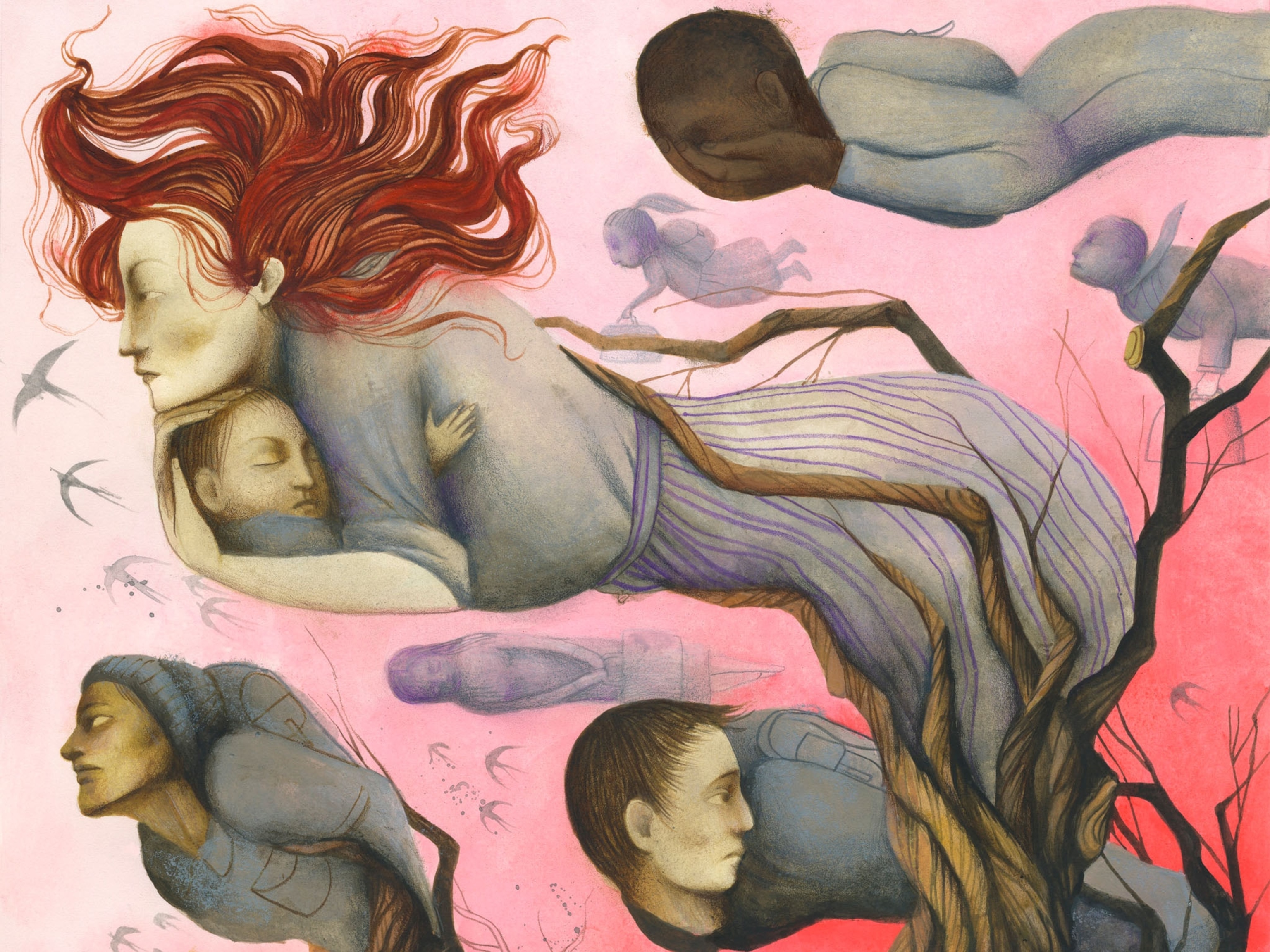
How we’re covering migration, one of this century’s critical stories
After successive refugee waves, more people have been forcibly displaced than at any other time since World War II—68.5 million by the UN’s latest count.
Five years ago I spent a few days with National Geographic Fellow Paul Salopek, a writer who is walking around the world, retracing the journey begun when modern humans first left Africa. Salopek’s walking 21,000 miles; I joined him for five miles I’ll never forget.
In Şanlıurfa, a dusty town in southern Turkey that is reputed to be the birthplace of Abraham, we found ourselves in the middle of a humanitarian crisis. Everywhere we looked, we saw Syrian refugees—in throngs on the streets, in small apartments crammed with multiple families. We saw people unable to find work of any kind, no matter their skills or education. We talked with people scared and scarred by their country’s brutal civil war; we heard stories of suffering, rape, torture, and other horrific crimes.
At the time, the United Nations reported that 51 million people worldwide had been forcibly displaced, for reasons ranging from war to economic hardship. That report declared the 2013 refugee count the highest since World War II. Unfortunately, the record’s been broken every year since. The latest UN report says 68.5 million people had been forcibly displaced by the end of 2017.
Humankind has always been on the move, fleeing a peril or searching for something better. In this month’s issue, we focus on those migrations, past and present. Writer Andrew Curry takes us inside a new science—paleogenetics—and explains what it’s revealing about the migrations that have shaped the populations of modern Europe.
Salopek journeys by choice, unlike many of the migrants he meets. His cover story describes the desperation of those trying to escape war, starvation, disaster: “How strong is the push to leave? To abandon what you love? To walk into the unknown with all your possessions stuffed into a pocket? It is more powerful than fear of death.”
The World Bank says that by 2050, the effects of climate change will spur some 143 million people to migrate. As one global threat compounds another, we will continue to provide thorough and meaningful coverage of these human journeys.
Thank you for reading National Geographic.
Go Further
Animals
- This ‘saber-toothed’ salmon wasn’t quite what we thoughtThis ‘saber-toothed’ salmon wasn’t quite what we thought
- Why this rhino-zebra friendship makes perfect senseWhy this rhino-zebra friendship makes perfect sense
- When did bioluminescence evolve? It’s older than we thought.When did bioluminescence evolve? It’s older than we thought.
- Soy, skim … spider. Are any of these technically milk?Soy, skim … spider. Are any of these technically milk?
- This pristine piece of the Amazon shows nature’s resilienceThis pristine piece of the Amazon shows nature’s resilience
Environment
- This pristine piece of the Amazon shows nature’s resilienceThis pristine piece of the Amazon shows nature’s resilience
- Listen to 30 years of climate change transformed into haunting musicListen to 30 years of climate change transformed into haunting music
- This ancient society tried to stop El Niño—with child sacrificeThis ancient society tried to stop El Niño—with child sacrifice
- U.S. plans to clean its drinking water. What does that mean?U.S. plans to clean its drinking water. What does that mean?
History & Culture
- Séances at the White House? Why these first ladies turned to the occultSéances at the White House? Why these first ladies turned to the occult
- Gambling is everywhere now. When is that a problem?Gambling is everywhere now. When is that a problem?
- Beauty is pain—at least it was in 17th-century SpainBeauty is pain—at least it was in 17th-century Spain
- The real spies who inspired ‘The Ministry of Ungentlemanly Warfare’The real spies who inspired ‘The Ministry of Ungentlemanly Warfare’
- Heard of Zoroastrianism? The religion still has fervent followersHeard of Zoroastrianism? The religion still has fervent followers
Science
- Here's how astronomers found one of the rarest phenomenons in spaceHere's how astronomers found one of the rarest phenomenons in space
- Not an extrovert or introvert? There’s a word for that.Not an extrovert or introvert? There’s a word for that.
- NASA has a plan to clean up space junk—but is going green enough?NASA has a plan to clean up space junk—but is going green enough?
- Soy, skim … spider. Are any of these technically milk?Soy, skim … spider. Are any of these technically milk?
- Can aspirin help protect against colorectal cancers?Can aspirin help protect against colorectal cancers?
Travel
- What it's like to hike the Camino del Mayab in MexicoWhat it's like to hike the Camino del Mayab in Mexico
- Is this small English town Yorkshire's culinary capital?Is this small English town Yorkshire's culinary capital?
- Follow in the footsteps of Robin Hood in Sherwood ForestFollow in the footsteps of Robin Hood in Sherwood Forest
- This chef is taking Indian cuisine in a bold new directionThis chef is taking Indian cuisine in a bold new direction



